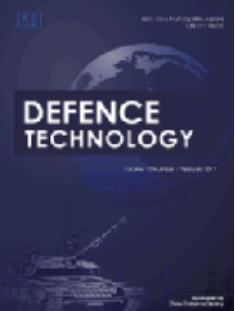Mesoscopic analysis on projectile motion characteristics in oblique penetration into concrete
IF 5.9
Q1 ENGINEERING, MULTIDISCIPLINARY
引用次数: 0
Abstract
The motion characteristics of projectile during oblique penetration into concrete were studied using a three-dimensional meso-scale model. The finite element model validation and parameter chosen were conducted by comparing the experimental data, with computational efficiency enhanced through improved mesh refinement. Penetration simulations involving deformable projectiles at various incident angles analyzed the effects of aggregate volume fraction and particle size on ballistic trajectory and terminal deflection. Sensitivity analysis reveals a strong power-law relationship between aggregate content and the projectile's deflection angle. The increase in aggregate content will enhance the confinement effect, shorten the intrusion distance of the projectile, and lead to a decrease in the deflection angle of the projectile. The effect of aggregate particle size on the projectile deflection angle follows a Gaussian distribution. The maximum deflection angle occurs when the aggregate particle size is between 2.7 and 3.1 times the projectile diameter. An increase in particle size reduces the number of aggregate-mortar interfaces at the same aggregate volume fraction, leading to an enlargement of the damage zone in concrete, a decrease in the number of cracks, and an increase in crack length. These findings enhance the understanding of concrete penetration mechanisms and offers valuable insights for engineering structure protection.
斜侵彻混凝土弹丸运动特性细观分析
采用三维中尺度模型研究了弹丸斜侵彻混凝土过程中的运动特性。通过对比实验数据进行有限元模型验证和参数选择,通过改进网格细化提高计算效率。变形弹在不同入射角下的侵彻仿真分析了聚合体体积分数和颗粒尺寸对弹道和末端偏转的影响。灵敏度分析表明,聚类含量与弹丸偏角之间存在很强的幂律关系。骨料含量的增加会增强约束效果,缩短弹丸的侵入距离,导致弹丸的偏角减小。骨料粒径对弹丸偏转角的影响服从高斯分布。当集料粒径为弹体直径的2.7 ~ 3.1倍时,发生最大偏转角。在相同骨料体积分数下,粒径的增大减少了骨料-砂浆界面的数量,导致混凝土损伤区域的扩大,裂缝数量的减少,裂缝长度的增加。这些发现增强了对混凝土侵彻机理的认识,并为工程结构保护提供了有价值的见解。
本文章由计算机程序翻译,如有差异,请以英文原文为准。
求助全文
约1分钟内获得全文
求助全文
来源期刊

Defence Technology(防务技术)
Mechanical Engineering, Control and Systems Engineering, Industrial and Manufacturing Engineering
CiteScore
8.70
自引率
0.00%
发文量
728
审稿时长
25 days
期刊介绍:
Defence Technology, a peer reviewed journal, is published monthly and aims to become the best international academic exchange platform for the research related to defence technology. It publishes original research papers having direct bearing on defence, with a balanced coverage on analytical, experimental, numerical simulation and applied investigations. It covers various disciplines of science, technology and engineering.
 求助内容:
求助内容: 应助结果提醒方式:
应助结果提醒方式:


